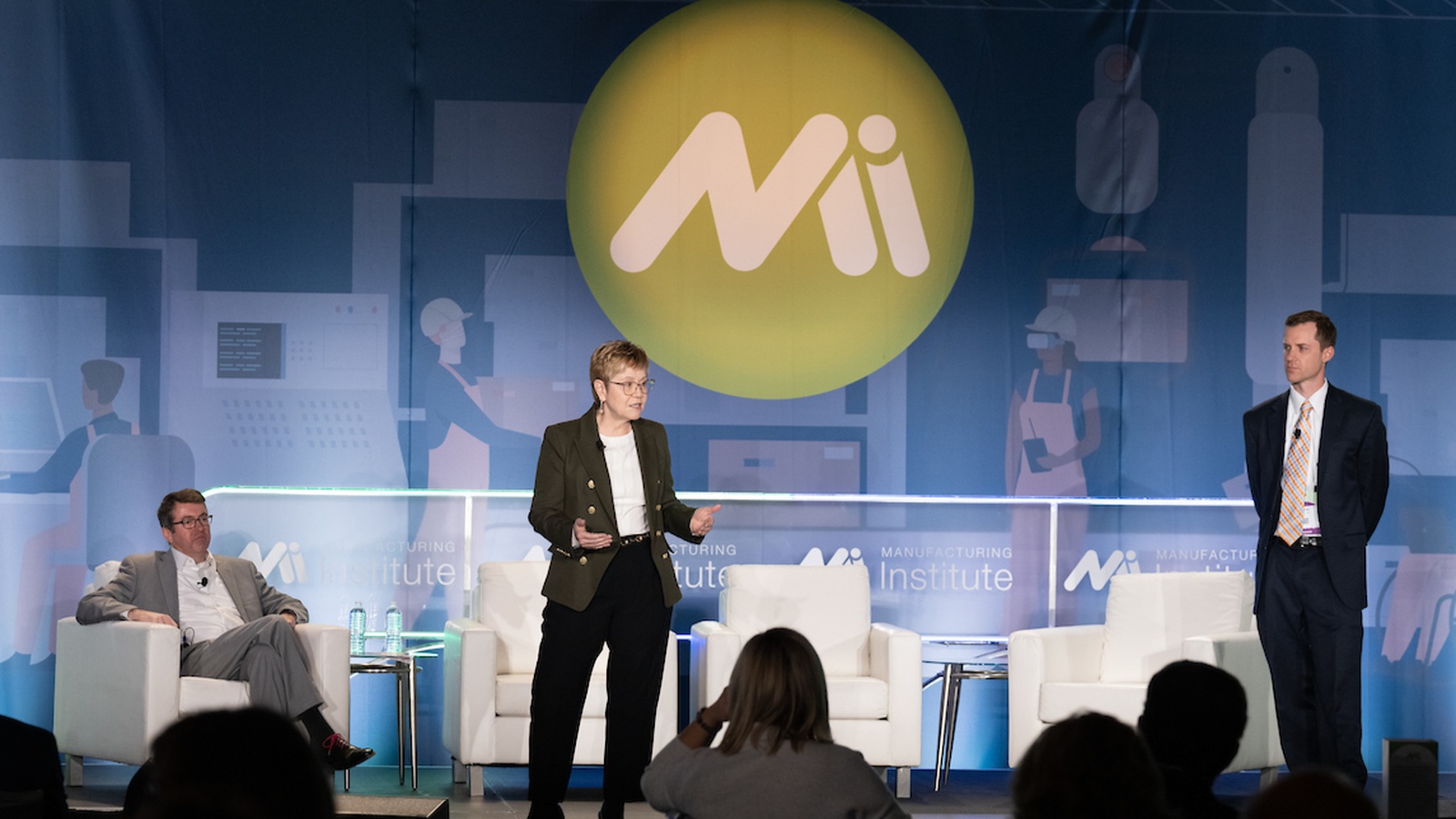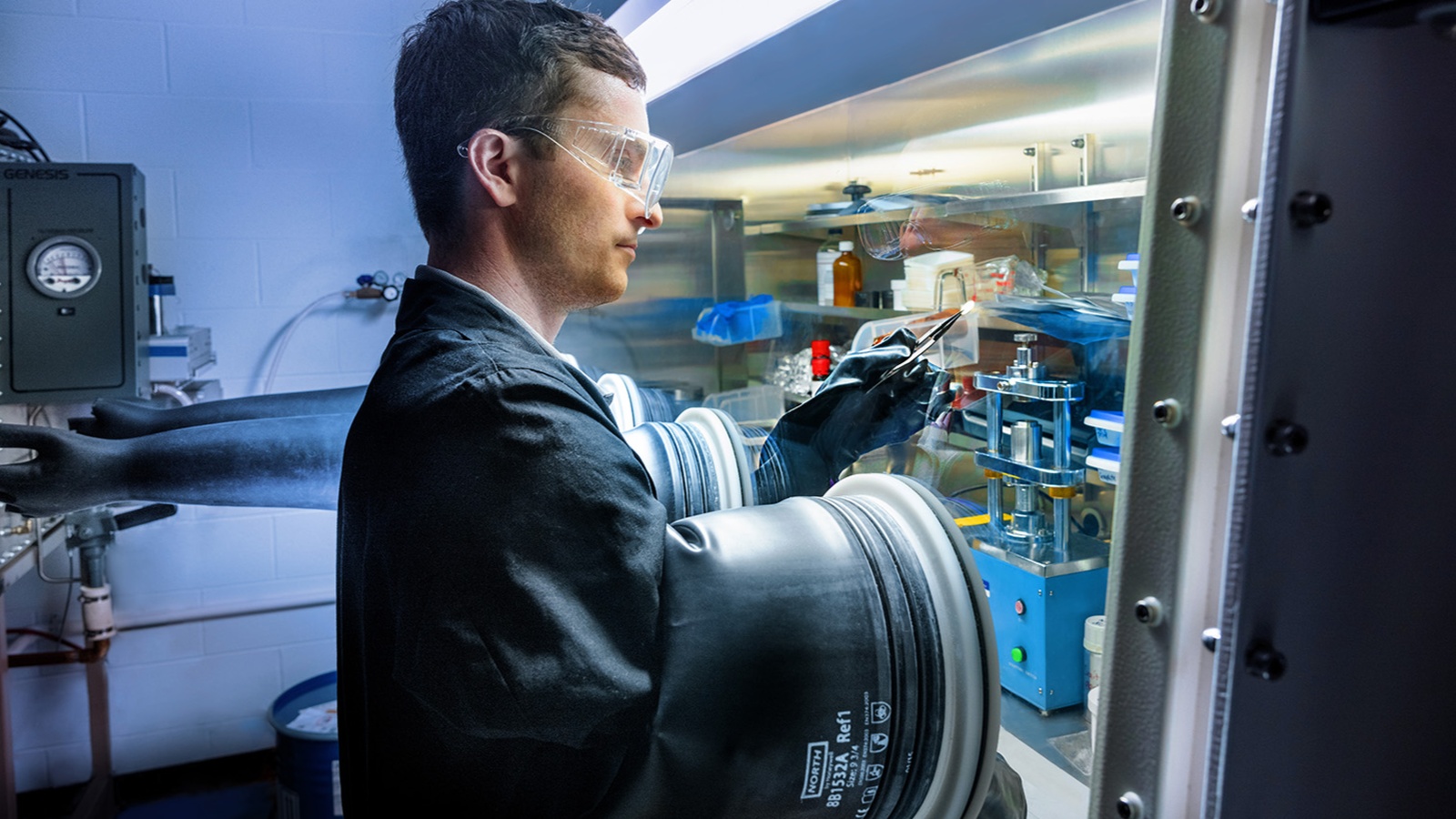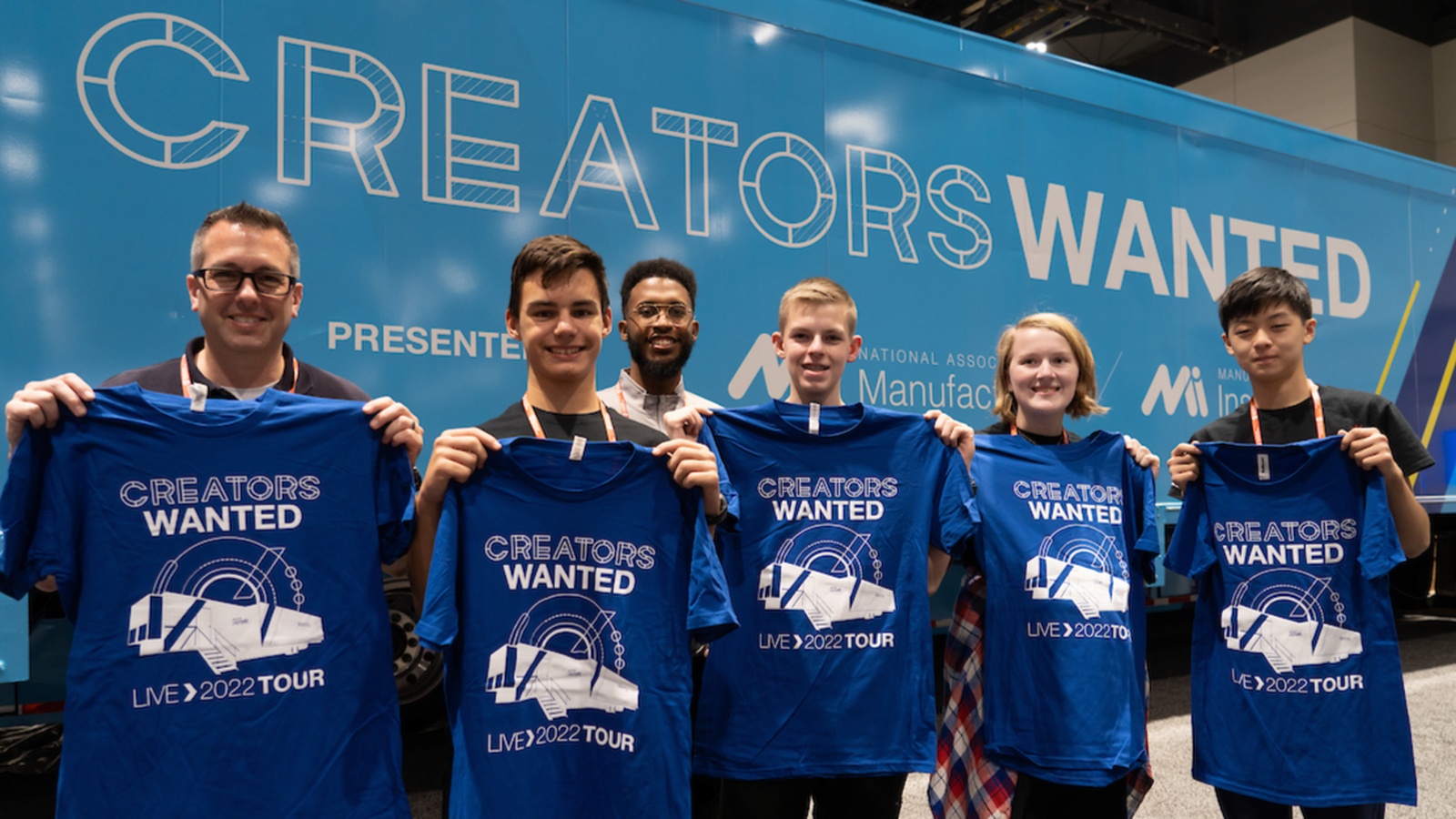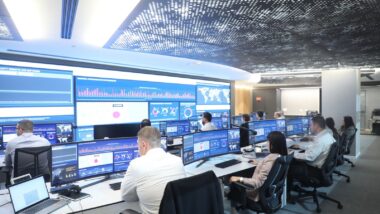How Manufacturers Can Leverage Adaptive Skills

The skills gap is one of the biggest challenges facing manufacturers today—but what if there was a way to overcome it and fill jobs more effectively and easily? In fact, such a method exists, and it’s called “adaptive skills” development.
Timely topic: The Manufacturing Institute’s inaugural Workforce Summit in Cincinnati, Ohio, covered this topic last month, in a session led by two EY partners. Here’s what they had to say.
- “What are adaptive skills? It’s exactly as you would expect: they’re skills that help an individual learn and expand their capabilities to meet an ever-changing job function, business market [or] home environment,” EY Americas Business Consulting Leader Lisa Caldwell told the audience.
- Developing and leveraging these skills, which include communication and problem solving, helps companies retain a broader workforce, according to a recent joint EY–MI study that built on earlier research from EY and Oxford Said Business School, Caldwell said.
- This is particularly important today, as the U.S. workforce could have a shortage of 2.1 million manufacturing jobs by 2030 if the skills gap is not addressed, according to a joint Deloitte–MI study cited by Caldwell.
Manufacturing-specific skills: In their study, the EY and MI identified three specific adaptive skills “that were highly relevant to the manufacturing industry,” said EY People Advisory Services Partner Stephen Fuller during the session.
- Root-cause analysis: The ability “to understand what the root of a problem is, what the data needed to make a decision is,” as Fuller put it.
- Systems thinking: It’s “all about … asking questions. ‘Who does this? Where does this go? How does this work? When does XYZ occur?’”
- Creative reasoning: The key here is the ability to consider problems from unusual perspectives, said Fuller.
Lessons learned: Caldwell shared some of the major study takeaways that manufacturers can use.
- Create an adaptive culture: “[B]uild a culture that … empowers, a culture that wants collaboration, a culture that encourages and recognizes people who speak up, who bring forward ideas.”
- Parlay adaptive skills into new career paths: “If we build career paths and we define the skills and the capabilities that are needed for those career paths, focusing on adaptive skills as much as the technical skills, I think we have something that could really attract people to want to not only come but stay in manufacturing.”
- Invest in individualized learning: This can include rotating jobs, mentoring, shadowing programs and leveraging technology to create experiential learning for employees, said Caldwell.
- Add adaptive skills to your hiring strategy: “It’s really important that we have classroom training and virtual training that isn’t just slides up on a screen, but is very immersive for people and lets them actually feel and experience … what we’re trying to teach them.”
The last word: Ultimately, closing the skills gap “all starts with skills and infusing adaptive skills into your role profiles,” Fuller said. “[Use] it as a way to connect people to learning experiences that are meaningful for them. That’s ultimately the formula for success.”
“We’re Gonna Get Hit Hard”: How an R&D Tax Policy Change Hurts Manufacturers

This story can also be found within the NAM’s R&D action center.
Miltec UV operates at the cutting edge of the manufacturing industry, developing new UV lamp systems for curing inks and coatings for everything from optical fiber to soup can lids. But after a tax law change went into effect in 2022, the Maryland-based manufacturer found that R&D became much more expensive—hampering its investments and tamping down its growth.
- Until the beginning of 2022, businesses could deduct 100% of their R&D expenses in the same year they incurred the expenses. Starting this year, however, a tax law change requires businesses to spread their deductions out over a period of five years, making it more expensive to invest in growth and innovation.
We spoke with Miltec UV President Bob Blandford to understand how the change was impacting his company and consumers in the United States and around the world.
The impact: Because the law changes the way businesses have handled investments for decades, companies like Miltec UV are having to grapple with a significant new cost that they had not anticipated previously.
- “Absent congressional action, we’re gonna get hit hard,” said Blandford. “Our taxes are going to go up dramatically. That’s cash getting sucked out of the business. So that’s going to get pretty ugly.”
A critical moment: Miltec UV is facing this challenge at a time when its leaders believe an exciting new opportunity is right around the corner. The company has developed a new technology for lithium-ion batteries, which could be used for next-generation electric vehicles.
- Over the past 11 years, Miltec UV has developed manufacturing electrodes used in these batteries, which will allow manufacturers to reduce costs and eliminate the toxic solvents used in existing battery manufacturing processes.
Yet, the new tax change threatens to place significant burdens on their development of this technology.
- “The problem is in the auto world; once they say go, it’s about a five-year process,” said Blandford. “They have to prototype, prove it, test it, then make the batteries. And during that time, we need to support R&D and support the business. So amortizing R&D over five years is a showstopper.”
- “We’re at a critical place now—we’re so close to commercializing it—and now we’re having to pay more taxes out,” said Blandford. “It hurts.”
A burden for employees: If not reversed, the harmful tax change will eat into profits, which Blandford is concerned may impact important benefits for employees. Earlier this year, Miltec UV signed on to the NAM Manufacturers Retirement program—an association-wide 401(k) retirement and savings plan—as a way to improve benefits for employees. The program, which has resulted in cost savings for employees, has proved extremely popular, he added.
- However, “The tax change will have a tremendous negative impact on cash flow, so everything will be on the table,” including retirement benefits, Blandford said.
- “Our team is important to us, and the last thing we want to do is have a negative effect on paychecks and benefits,” said Blandford. “This absolutely will have a spillover effect on every part of the business.”
The last word: “Miltec funds 100% of the company’s R&D costs through the profits of its commercial business as opposed to outside investment,” Blandford said.
- “Spreading the R&D deduction over a five-year period means that each year we will now face a higher tax burden due to the inability to immediately deduct R&D expenses. That is real money that is desperately needed to stay competitive with employee salaries, benefits and even to support new R&D positions that we now are trying to fill.”
Get involved: The NAM has deployed a digital R&D Action Center that manufacturers can visit for critical R&D policy updates, industry stories and an opportunity to engage directly with their members of Congress: https://nam.org/protect-innovation/
Manufacturers: An Expanded IP Waiver Would Jeopardize American Innovation and the Ability to Combat Future Pandemics
Washington, D.C. – Following the announcement by the Office of the U.S. Trade Representative calling for a delay in a World Trade Organization decision on whether to expand a waiver of intellectual property, National Association of Manufacturers Vice President of International Economic Affairs Ken Monahan released the following statement:
“An expanded intellectual property waiver would jeopardize American innovations that are fundamental to fighting current and future pandemics and undermine U.S. technology leadership over our commercial rivals, such as China. Manufacturers welcome USTR’s announcement supporting a delay in the decision on whether or not to expand the WTO’s waiver on COVID-19 products and domestic supply chains and urge all WTO members to fully consider the consequences of such an expanded waiver.
“Efforts could be better spent focusing on other effective international approaches to deal with ongoing and potential global health crises.”
-NAM-
The National Association of Manufacturers is the largest manufacturing association in the United States, representing small and large manufacturers in every industrial sector and in all 50 states. Manufacturing employs more than 12.9 million men and women, contributes $2.77 trillion to the U.S. economy annually and has the largest economic multiplier of any major sector and accounts for 58% of private-sector research and development. The NAM is the powerful voice of the manufacturing community and the leading advocate for a policy agenda that helps manufacturers compete in the global economy and create jobs across the United States. For more information about the NAM or to follow us on Twitter and Facebook, please visit www.nam.org.
Case Study: How Cornerstone Building Brands is Creating a Diverse, Inclusive Workplace
Cornerstone Building Brands is a manufacturing employer committed to creating a workplace culture where DE&I is not just prioritized but celebrated. Here are some of the actions they’ve taken to make their commitment a reality:
- Create a DE&I Council which meets monthly to focus on strategic alignment, communications, coaching, training, metrics, and governance.
- Establish 4 ERGs (Women!, Patriots, Pride, and Unity) that meet to learn, plan events, address concerns, and foster mentoring opportunities.
- Sign the NAM Pledge for Action and taking 44 tangible actions towards its commitment to the pledge and broader DE&I goals.
- Include a DE&I statement in all job descriptions and ensure there is pay-scale parity.
Read more about Cornerstone Building Brands’ efforts and tips here. If you’re interested in learning more about what your organization can do to build a diverse and inclusive workplace, check out the MI’s Diversity + Inclusion Benchmarking in Manufacturing report.
The Manufacturing Experience: Closing the Gender Gap
The Manufacturing Institute with support from Colonial Life released a new paper that explores what manufacturers are doing to help close the gender gap, incorporating survey responses and interviews with various company executives that identify key insights and practical advice for other manufacturers. To address the workforce shortage, manufacturers need to expand their talent pools, bringing in more diverse and underrepresented candidates.
Women represent a sizable talent pool that manufacturers cannot ignore, especially as the sector becomes more advanced. Earlier this year, the MI launched our 35×30 campaign, which aims to do just that—increase the percentage of women among manufacturers from 29%, where we hover now, to 35% by 2030 by changing perceptions among women and girls about manufacturing as a career, attracting and retaining more female employees.
Read the full report here.
Manufacturing in 2030 Megatrend: Ride the Power Curve

Digital manufacturing is built on just five “cornerstones”—and the work done in those areas in the next decade and beyond will largely determine the success or failure of key aspects of manufacturing’s technological future, according to the Manufacturing Leadership Council, the NAM’s digital transformation arm.
The MLC says that developments in electronics, computer systems, communications technologies, software and cyber infrastructure will have a direct impact on advancements made in human-machine interaction, automation and robotics, and autonomous operation. We break these down below:
Electronics: Intel predicts that by 2030 it will be able to incorporate 1 trillion transistors on a single semiconductor chip.
- Manufacturers will need that kind of power to enable computer systems and software to process much larger data volumes as they connect more plant equipment and people within their business ecosystems.
Computer systems: Manufacturers should expect a changing computer landscape as biological, physical and digital systems converge to offer more options.
- Quantum computing and nanocomputing offer potentially greater computational ability, which will allow manufacturers to process more data faster.
- Meanwhile, traditional computers will become lighter, thinner and more flexible. Different user interfaces, such as voice recognition, will progress.
Communications technologies: The years ahead will see manufacturers adopt 5G-based networks, which offer higher bandwidth and lower latency than prior technology.
- Communications technology suppliers are already working on 6G networks, expected to become commercially available in 2030.
Software: Next-generation software applications, in addition to web and mobile capabilities, will support voice, wearables, touch and AR/VR to a greater extent than ever before.
- These applications will be driven increasingly by artificial intelligence.
Cyber infrastructure: The cyber infrastructure that has been in development for the past two decades has allowed for separation between data and physical computing sources (i.e., cloud computing.)
- Looking ahead, an infrastructure that brings together data from all sources with business and technology tools will facilitate innovation, R&D, operating models and business growth.
Manufacturing in 2030 Project: Ride the Power Curve is just one of the megatrends identified by the Manufacturing in 2030 Project, a future-focused initiative of the MLC. For details on more megatrends, industry trends and key themes for Manufacturing in 2030, download the MLC’s new white paper “The Next Phase of Digital Evolution.”
Building the Future Workforce at Rockwell’s Automation Fair

Automation isn’t just changing the manufacturing industry; it’s enabling human-centric progress in tackling the industry’s workforce crisis.
In action: As part of the Automation Fair in Chicago last week, more than 15,000 attendees got to see how manufacturers—and companies like Rockwell Automation—are providing solutions to the shortage, which could reach 2.1 million unfilled jobs by 2030, according to research from the Manufacturing Institute (the workforce development and education partner of the NAM) and Deloitte.
- Rockwell Automation brought the Creators Wanted Tour, a project of the NAM and the MI, to its Automation Fair, giving students, parents, educators and manufacturers the chance to see firsthand how digital transformation and new technologies are supporting careers and opportunities in modern manufacturing.
- The tour’s much-heralded immersive experience, along with displays and programs featuring experts from the MI and the Manufacturing Leadership Council (the digital transformation division of the NAM), gave attendees insight into the pathways and support available in the industry.
- FactoryFix, the official recruiting partner of Creators Wanted, was also on hand to showcase its manufacturing talent platform for job seekers—and manufacturers searching for a one-stop recruiting solution.
Changing perceptions: Creators Wanted aims to shrink the workforce gap by dispelling myths about automation and attracting the next generation to manufacturing jobs. It’s seeing impressive success, MI President Carolyn Lee said during a session at the event.
- “Today 40% of parents have a positive perception of manufacturing,” Lee said, citing a recent joint Deloitte–MI study. “And what we’re finding is that parents see these are durable careers with great possibility and opportunity, and they’re encouraging their children to consider them.”
Digital help: “Digital is going to help manufacturers deal with their workforce issues because it’s going to not only help change the perception of the industry, but create new jobs going forward, particularly in math-intensive areas like data analytics and artificial intelligence,” said MLC Vice President and Executive Director David Brousell.
- Brousell cited the MLC’s “Manufacturing in 2030 Project,” saying, “We have to think about digital transformation as human-centric digital transformation—because we’ve got to bring the technology and the people together simultaneously to have an effective transformation.”
Impressive results: Since it began just more than a year ago, the Creators Wanted Tour has seen more than 8,000 students pass through its immersive mobile experience, where more than 75% of attendees leave with a significantly improved view of manufacturing.
- More than 510,000 students and career mentors have also signed up to learn more about modern manufacturing careers.
- Creators Wanted has recruited successfully both mentors and mentees for the mentorship program of Women MAKE America, an MI initiative that aims to close the gender gap in manufacturing.
- The Automation Fair offered more than 150 interactive sessions on the newest industrial solutions and best practices, and more than 200 companies exhibited across 200,000 square feet at Chicago’s McCormick Place.
Media mentions: The fair and Creators Wanted’s presence drew a slew of media coverage, including from “Morning in America” with Adrienne Bankert, “The John Howell Show” on WLS-AM, Univision Chicago and suburban Chicago’s Daily Herald.
- In addition, the Daily Line published an op-ed on the future of manufacturing by NAM President and CEO Jay Timmons and Rockwell Automation Chairman and CEO and NAM Executive Committee member Blake Moret.
The last word: “As the world’s largest company dedicated to industrial automation and digital transformation, Rockwell is always looking toward the future of manufacturing,” Moret said. “Campaigns like Creators Wanted are critical to recruiting the best future talent to create a thriving workforce.”
Talking Cybersecurity with NAM COO Todd Boppell

What should manufacturers know about cybersecurity threats? NAM COO Todd Boppell recently appeared on Mandiant’s “Defender’s Advantage Podcast” to explain how cyber criminals are targeting manufacturers today and what companies can do to protect themselves. Here’s some of his advice.
The threat today: While cyberthreats are nothing new, in recent years there has been a sea change, Boppell said.
- “I think what’s really changed in the past five years, especially—it probably started in the past 10, but it’s massively accelerated—is that cybercrime as a business model is on the rise,” he said.
- “A lot of the bad guys, whether their motivations are political or purely economic, have realized that ransomware and other forms of pure disruption are sometimes just as helpful or just as lucrative as stealing any sort of intellectual property.”
Manufacturing as a target: Manufacturers get victimized by ransomware attacks “because manufacturing is one of the least tolerant industries of any sort of downtime,” Boppell continued.
- “Over the past five years, manufacturing was always in the top three [sectors targeted by cyber criminals], typically with medical and financial services … but really over the past 18 to 24 months, all the data I have seen says that manufacturing has jumped to number one and has stayed there.”
What small businesses need to know: Small businesses may believe that they are beneath notice for cyber criminals, but that’s not the case, said Boppell.
- Once they come to terms with that depressing reality, small companies should take a look at their staff and
 operations, he said. “Do they have the talent on staff to understand what they should do, what their risks are, which systems they currently have that need to be addressed? Do they understand all the acronyms at play? Do they understand the different threat vectors?”
operations, he said. “Do they have the talent on staff to understand what they should do, what their risks are, which systems they currently have that need to be addressed? Do they understand all the acronyms at play? Do they understand the different threat vectors?”
- And last, once the company generally knows what it’s doing and perhaps has some IT support, it should consider its budget, and how it can “get the most bang for its buck.”
What large businesses need to know: “Larger companies want to be helpful, and they want to help secure their supply chain partners, because it is absolutely in their best interests. … However, they are unbelievably busy just protecting their own boundaries and just worrying about all the attacks they’re facing,” Boppell said.
- “And of course, it’s always a little bit frustrating for smaller companies to have a larger company try to tell them what to do … so you have to really manage those relationships and figure out the right way to go in and help.”
The most important thing: “The number-one thing I’m trying to get through, and the number-one myth I want to dispel, is that a lot of small manufacturers believe that … they have no IP to protect,” said Boppell. “Maybe they make screws and fasteners, or maybe they make mattresses or whatever. … They feel like cyber is not a big deal for them.”
- “What we’ve seen with ransomware is that’s absolutely not true. Their ransomware risk is just as high as anyone else’s because they can’t tolerate downtime. And if they haven’t taken the steps to secure their networks and their equipment, then they’re going to be even more prone to falling victim to ransomware.”
Listen to the whole thing: You can find the entire interview with Boppell here.
Protect yourself: Interested in safeguarding your company? NAM Cyber Cover was designed specifically to give manufacturers and their supply chains enhanced risk mitigation and protection. Find out more here, and check out this webinar on the state of cybersecurity for manufacturers.
Fostering a Diverse, Inclusive Culture at Smithfield
When it comes to diversity and inclusion, Smithfield Foods puts its commitments into action.
The world’s largest pork processor has committed to measurable increases—of 35% and 30%, respectively—in the hiring and promotion of women and individuals in underrepresented groups. And it’s pledged to do it all by 2030.
2030.
Bridging a gap: In September 2020, the Virginia-headquartered manufacturer launched its Operations Leadership Program, created to develop a strong pipeline of diverse talent to fill future management roles.
- “We lead with data. And our data shows there’s a gap in diverse representation between production and management,” said Smithfield Foods Manager of Diversity, Equity & Inclusion Jessica Jones. “The OLP provided us an opportunity to track data on team members, their promotion opportunities, how they’re elevating within the company with a commitment to monitor year-over-year data three years after program completion for each cohort.”
- In just over two years, the program, which garners participants through applications, has seen 132 graduates and nearly 50 promotions.
Providing encouragement: Ironically, many of the same employees the OLP was designed to help were initially reluctant to apply, Jones said.
- “We did focus groups and what we realized is, those who weren’t applying were women and people of color,” she said. “They shared, ‘I don’t think it’s for me,’ and when we heard that, we realized it meant, ‘I never saw myself going higher than my current opportunity.’”
- Smithfield’s leadership began to strategically target their communications to specifically focus on these employees and encourage them to consider the program. “That’s when we started to see the uptick in more women and people of color applying,” Jones said.
Other D&I initiatives: To reach its lofty 2030 diversity and inclusion goals, Smithfield has deployed other programs, too, including the following:
- Smithfield’s Farmer Diversity Program, which aims to increase the number of Black and minority hog farmers in the company’s supply chain;
- A Future Leaders Program that gives scholarships and career opportunities to rising high school seniors through summer internships to increase diversity in leadership;
- An expansion of the Smithfield Foods Scholarship Program for eligible dependents of Smithfield employees so that it includes historically Black colleges and universities; and,
- A supply-chain initiative in which the company has committed to increasing its production-facility spend with minority-owned businesses by 14% by 2025.
The company has also signed NAM’s Pledge for Action, in which manufacturers commit to 50,000 specific actions to increase diversity and inclusion.
The last word: “I have seen this company change and evolve in such a wonderful way,” Jones said. “We now have opportunities to elevate and expose our employee base to Smithfield’s leadership—making sure they have a touch point, a way to connect. Our leadership wants to know how they are doing, prevalent challenges and support needed. The change has been so encouraging.”
“Cybersecurity Finds You”: An Interview with Rockwell Automation’s CISO

When asked how she got into cybersecurity, Nicole Darden Ford replies “cybersecurity kind of finds you.” The new chief information security officer at Rockwell Automation began her career in the military, where she first got into cybersecurity, then created a cybersecurity program for the U.S. Department of Agriculture before taking several leadership roles in the private sector.
Today, her advice for companies is surprisingly similar: cyberattacks will find you. As she puts it, “It’s not if, it’s when. And it’s not one time, it’s several.”
So how should manufacturers prepare for these threats? We spoke to Darden Ford recently about her recommendations, as well as Rockwell’s efforts to safeguard its own supply chain and provide services to other companies.
The current situation: “Manufacturers account for 65% of industrial ransomware last year. We’ve seen an unprecedented number of attacks, and we’ve seen attackers focus on OT,” Darden Ford says. She predicts the attacks on OT will only escalate.
- Meanwhile, many manufacturers have a clear strategy for IT, but they have not given as much thought to protecting their operational technology. Yet, as machines get more connected, their operations may become more vulnerable—especially as companies try to integrate legacy systems that weren’t “meant to be connected or patched.”
- In addition, “because we are so connected, there are third-party risks,” Darden Ford says. Small manufacturers may be more inviting targets for hackers than they realize, since their systems could provide a back door into the networks of their larger clients.
- On the plus side, manufacturers are getting smarter in building their defenses, she says. And that’s where Rockwell comes in.
Rockwell’s role: Rockwell aspires to become a “trusted advisor” to companies seeking cyber defenses, says Darden Ford. It already manufactured OT, so moving into cybersecurity for such equipment was a natural next step.
- Its partnerships with other firms, including Dragos, CrowdStrike, Cisco and others, allows
 Rockwell to offer bespoke cyber monitoring and other services to its clients.
Rockwell to offer bespoke cyber monitoring and other services to its clients. - These services include penetration testing, threat detection and response and an OT “SOC”—i.e., a security operations center, which monitors threats to clients’ operations remotely.
How it works: “We have an OT cybersecurity roadmap—it starts with an assessment in your specific OT space, then walks through potential risks,” Darden Ford says. (See the end of this article for her detailed description of this roadmap.)
- The process includes building an “asset inventory, as you can’t protect what you don’t know.”
- “Then we talk about ways you can reduce your attack surface,” Darden Ford continues. “This is about segmentation. We help organizations divide their network into different domains. If you have ransomware or malware that propagates very quickly, then you have the opportunity to quarantine it.”
- In addition, the roadmap helps companies decide which tools and resources to use. For OT, you need to use very passive systems that don’t interfere with “getting the product out the door,” Darden Ford says.
After this process is complete, Rockwell’s SOC helps clients stay safe and hone their responses to real attacks.
- The SOC keeps eyes on a company’s operations remotely, notifies it of breaches within the plant network and helps it decide which threats to tackle. As Darden Ford says, the SOC stands in for the teams that companies would otherwise have to hire themselves.
On-site resources: Manufacturers can tap their existing staff to work on cyber defenses, including with offsite monitors. Darden Ford recommends drafting “the plant engineering team, along with the IT team,” who would have the knowledge and resources required.
A community effort: Large manufacturers should help educate small manufacturers on cyber issues, says Darden Ford.
- “We have a lot of suppliers, so to mitigate third-party risk, we provide more awareness about OT and advice about upping their cyber hygiene. We work closely with suppliers and do a lot of knowledge sharing,” she says.
Collaboration at the top: In addition, it’s also beneficial for CISOs and manufacturing leaders to consult their peers in what Darden Ford calls “mastermind sessions.”
- These conversations have provided her with “a lot of insights and data,” she says. She gets indispensable input on “strategies, frameworks, journeys and roadmaps,” as companies try to find their way through this cyber landscape together.
The bottom line: When asked what she says to companies that doubt the need for cyber protections, Darden Ford has a simple answer: “You wouldn’t drive your car without insurance—that’s what this is.”
- “What used to be optional is becoming mandatory,” she adds. “For small or midsize companies, you are still going to have to report” back to your large customers, many of whom require stringent protections of their suppliers. Those requirements will only get “more and more rigorous over time,” she warns.
- In other words, however you choose to do it, “you need a plan.”
The Roadmap
Darden Ford supplied us with her account of Rockwell’s cyber roadmap for its own suppliers, below. “The playbook aligns with the NIST framework, showing you step-by-step how to audit your current security state, identify gaps and take a proactive approach to mitigate risk,” she says. Here is her account of the key steps.
Step #1: Discover
- Know where you stand. Conduct a security and risk assessment—log all issues and review progress against findings.
- You can’t protect what you can’t see. You must gain a full understanding of what network assets you have on your plant floor and their current state. Start by conducting extensive network discovery and asset inventory.
Step #2: Remediate
- Work with stakeholders to prioritize assets and organizational risk levels. Take the necessary steps to eliminate, upgrade or replace unneeded, unused or unsupported OT applications and infrastructure. This will look different for every organization based on what you discover in Step #1.
Step #3: Isolate
- Establish a perimeter by physically and logically segmenting your networks. Put up a firewall and establish internal and external cybersecurity policies to protect your OT assets. Set up an on-premises industrial data center to encapsulate critical applications inside the protected OT network.
- Secure endpoints with security software on plant floor assets.
- Enable third-party remote access. Third parties need access, but you must control the access and maintain visibility into what they’re doing in your network by enabling OT access controls.
Step #4: Monitor and Respond
- Now that you have a solid foundation in place, the next step is to implement OT network monitoring to provide real-time OT cybersecurity, including malicious event/asset risk alerting, network diagnostics, AI learning and KPI dashboarding. The data only works for you if you are continuously viewing and reacting to it.
- Establish an OT SOC for 24/7 real-time alert monitoring, acknowledgement and triage. Cyberattacks aren’t limited to 9–5.
- Create an integrated IT/OT cyber event response team. Define event response and isolation protocols. IT/OT must have equal involvement and buy-in for these protocols to be successful. Execute tabletop exercises to simulate attacks and outcomes.